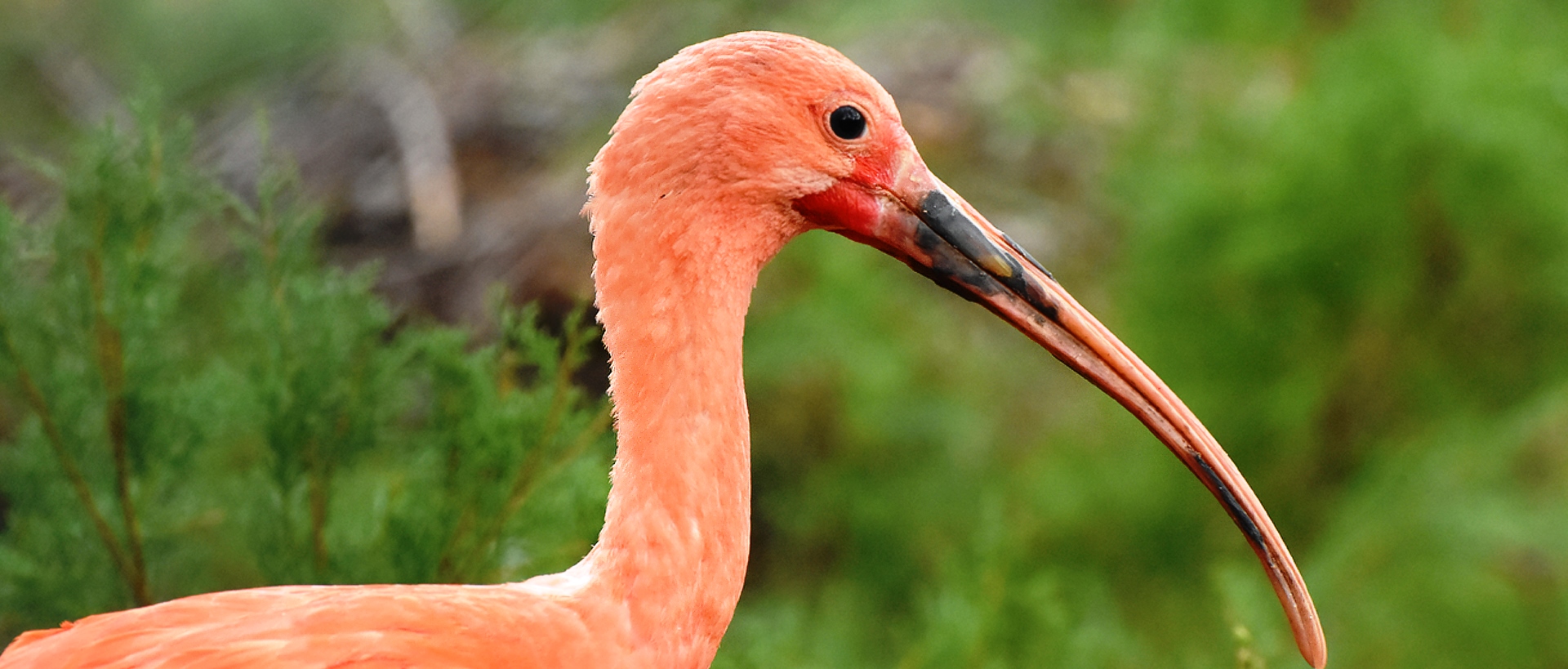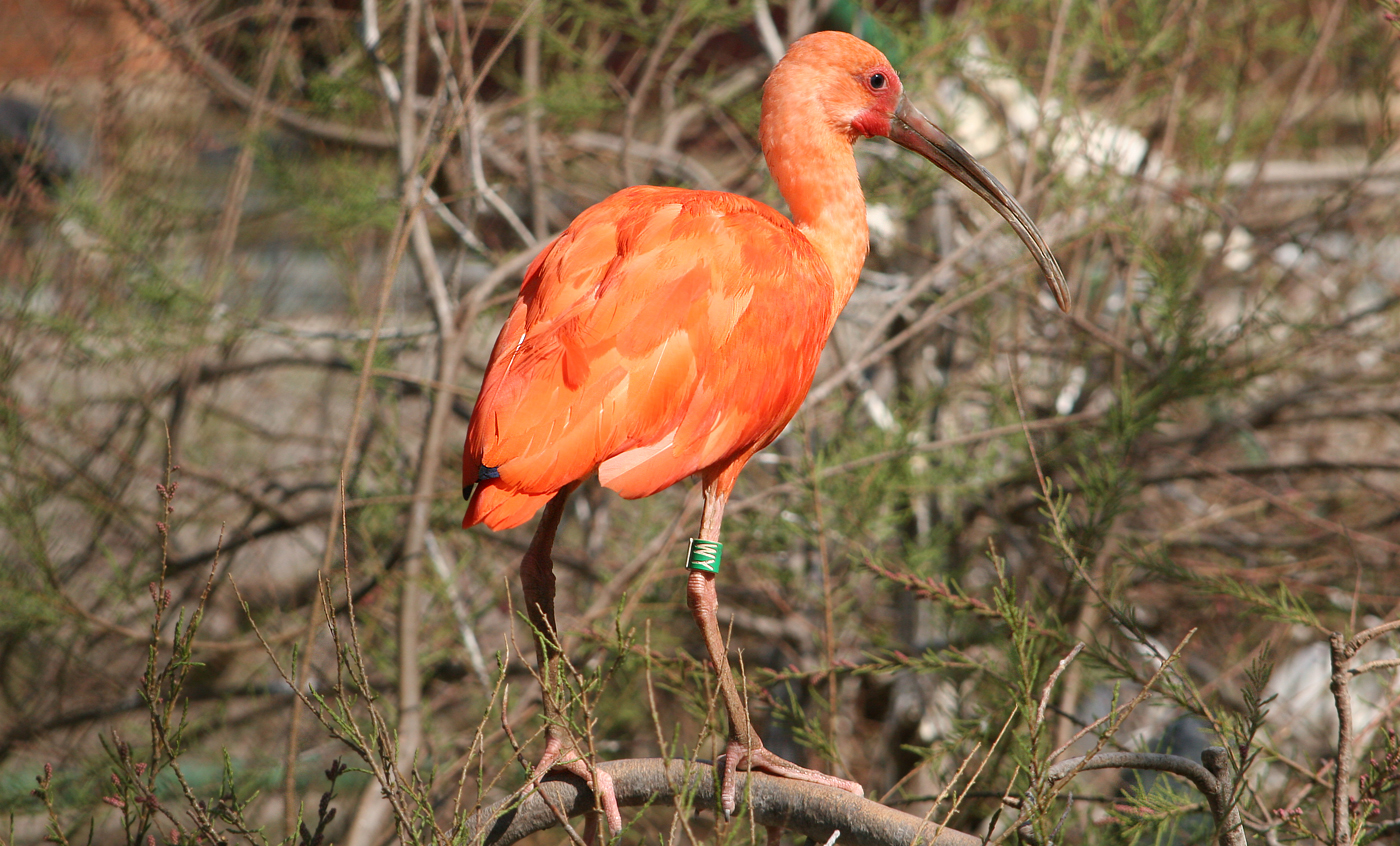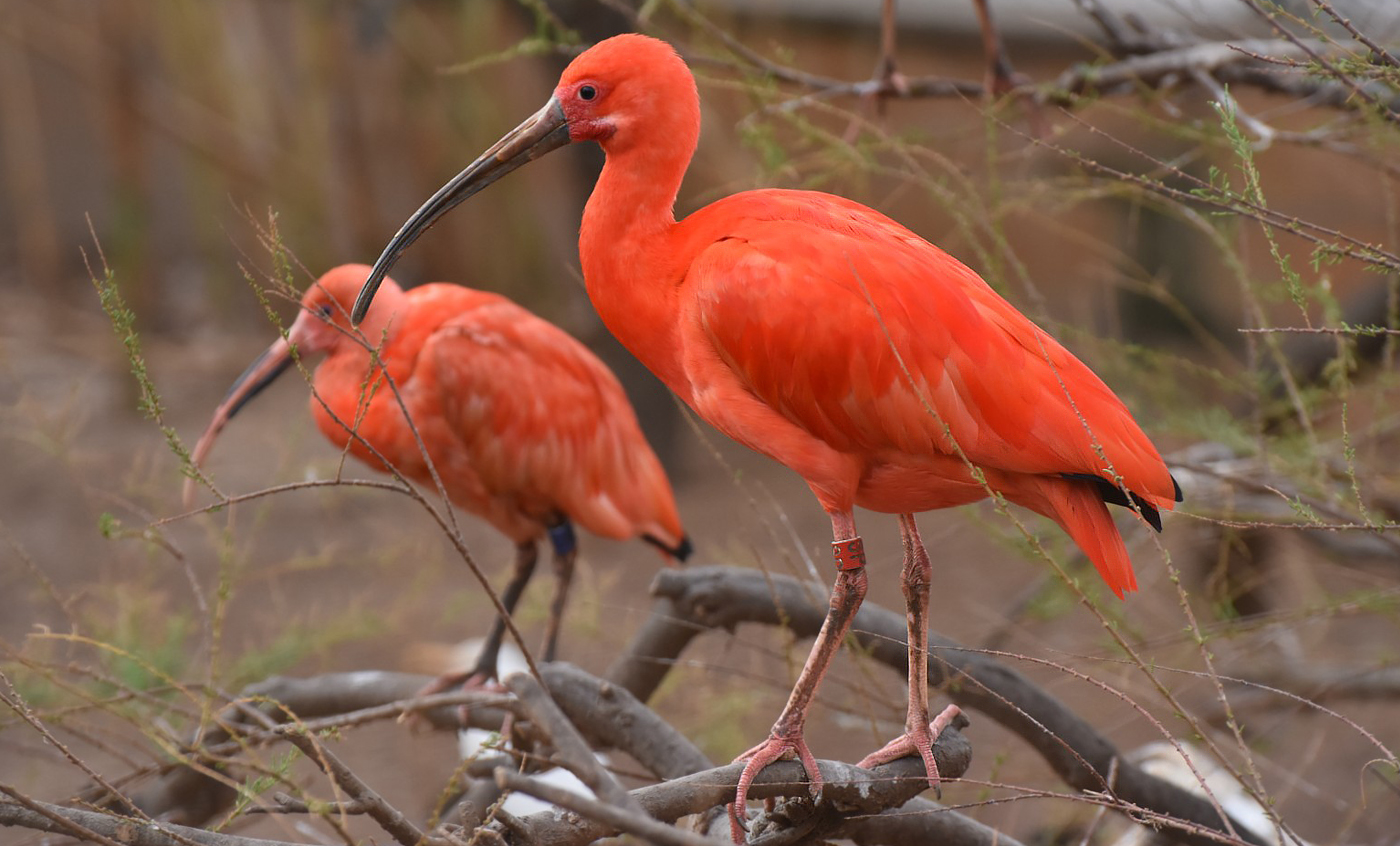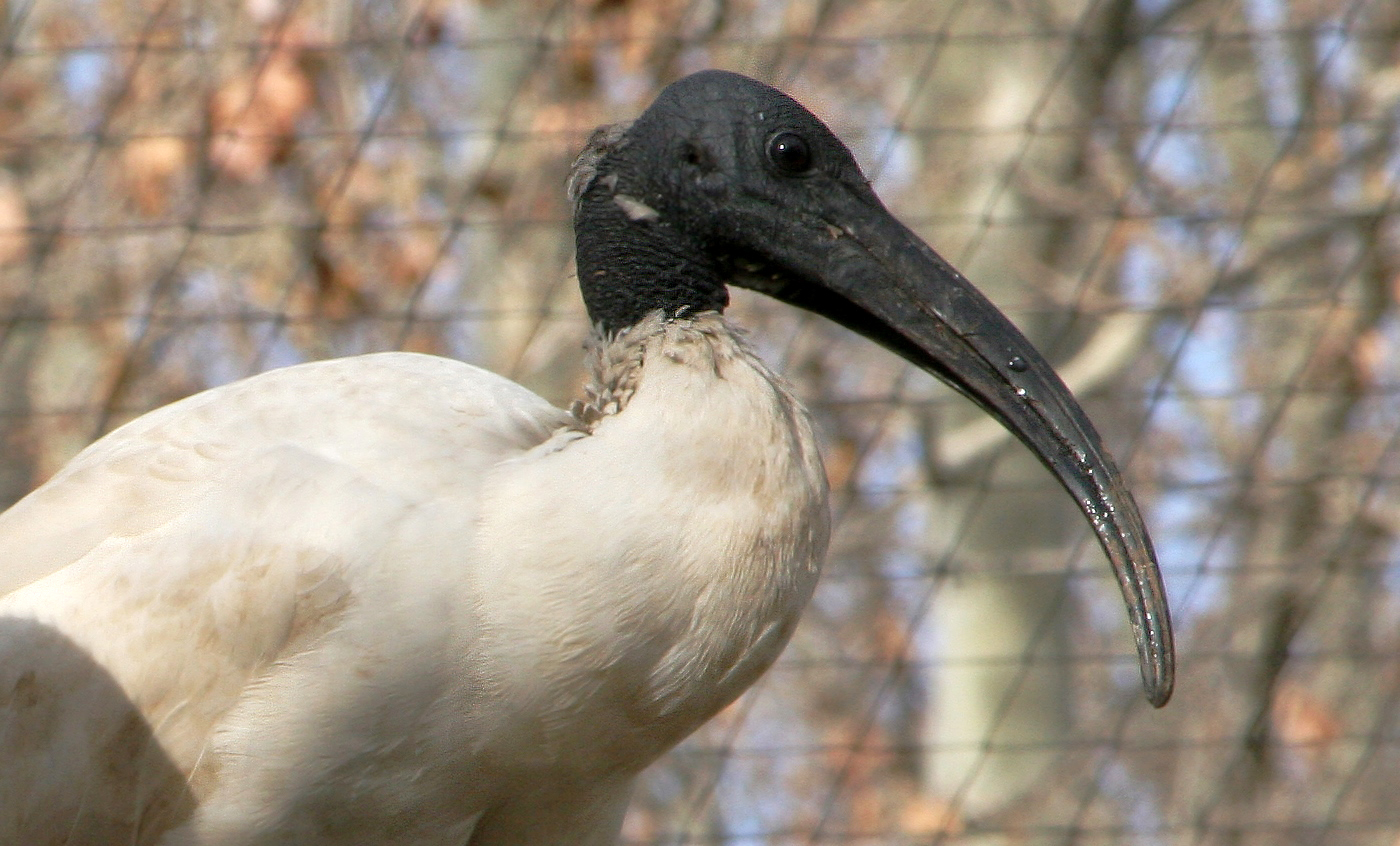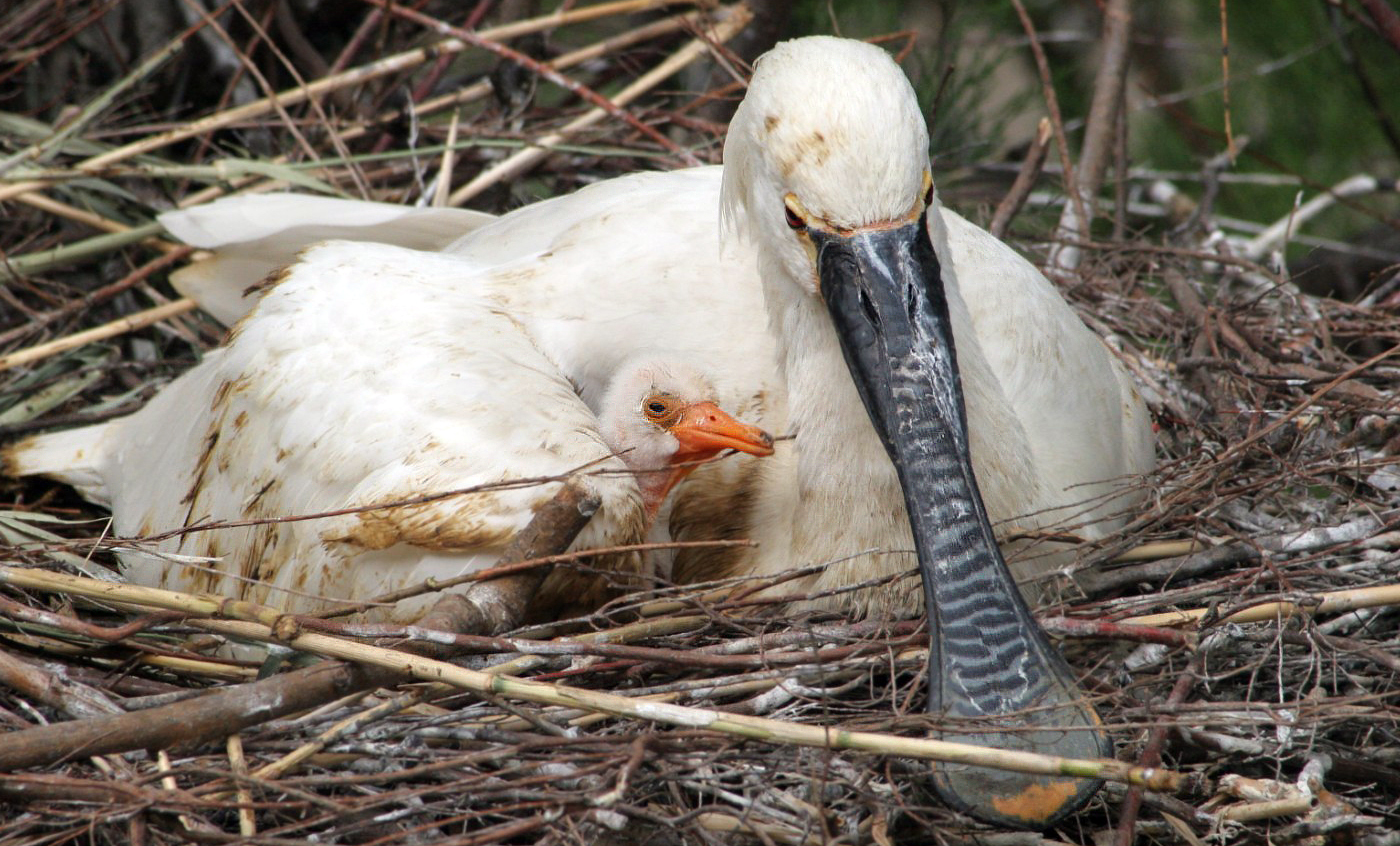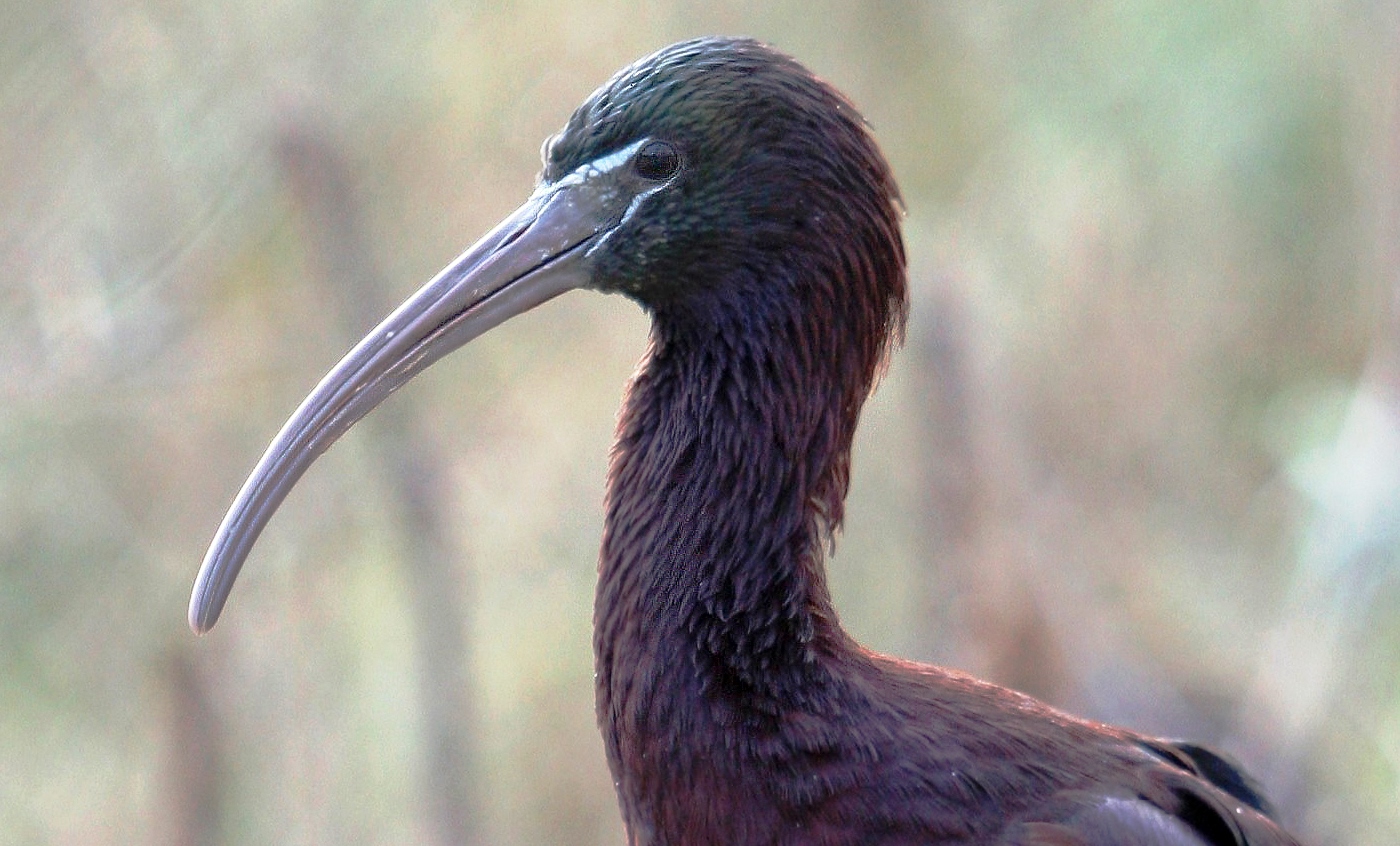Scarlet ibis
The scarlet ibis has the most strikingly spectacular plumage of all this group of aquatic birds. As with all ibis, it uses its long, curved bill to feed on invertebrates it finds in the mud and capture other small prey.
It is gregarious, living in groups of about 30, and forming breeding colonies with other species of ibis and herons in the mangroves and marshlands of its range.
Natural habit
South American Northwest
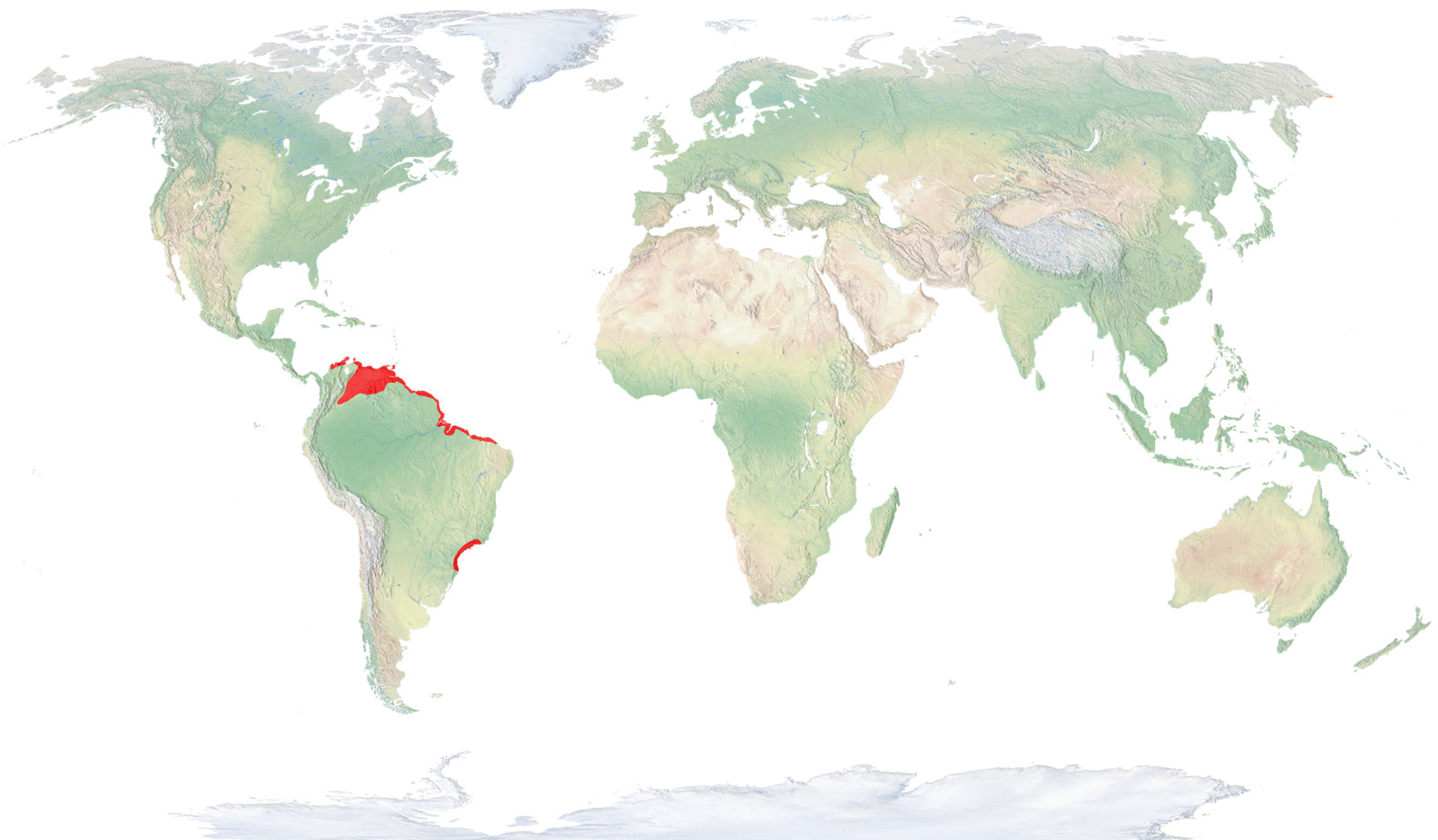
- Distribution / Resident
- Breeding
- Wintering
- Subspecies
Risk level
- Extint
- Extint in the wild
- Critically endangered
- In Danger
- Vulnerable
- Near threatened
- Minor concern
- Insufficient data
- Not evaluated
Taxonomy
Physical characteristics
Biology
Reproduction
Biology
The scarlet ibis is the species with the most spectacular colouring of the entire group of aquatic birds with a characteristic curved bill: the plumage and legs are scarlet, while the beak is black. The young have duller grey and white colouring.
They live in the tropical wetlands of Colombia, Ecuador, Venezuela and northeast Brazil, where they seek out the waters of salt marshes, lagoons, swamps and mangroves to eat and breed there.
They eat molluscs, crustaceans and small fish.
The breeding period is quite variable, but primarily starts during the wet period, although it is also quite dependent on the water level in the swamps where they live. They nest in colonies, building their nests in trees with branches and twigs. They normally lay two eggs, although this number can increase or drop significantly at times, then incubating them for 22 to 23 days. Storms and changes in water levels can wreak havoc on breeding colonies.
Highly gregarious, they form large breeding colonies, often in the company of other species of aquatic birds. Considered strictly resident.
This species is still common locally, although numbers have decreased in many wetlands of their area of distribution. Destruction of habitat and flooding due to climate change have caused lower breeding rates and, in short, a drop in their populations.



